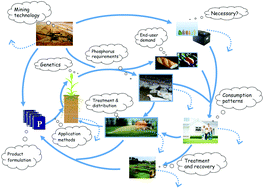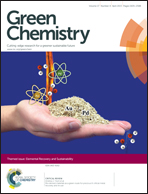Greening the global phosphorus cycle: how green chemistry can help achieve planetary P sustainability
Abstract
The sustainability of global phosphorus (P) use is emerging as a major societal goal to secure future food, energy, and water security for a growing population. Phosphate rock (PR) is a critical raw material whose inefficiency of use is leading to widespread eutrophication and uncertainties about supplies of affordable fertilizers. Green chemistry and green engineering can be applied to help close the global P cycle by addressing three sustainability challenges: (1) consume less PR and with greater efficiency, (2) minimise P losses and generation of waste P that can no longer be re-used, and (3) set economically, socially and environmentally acceptable P sustainability targets to lower P demand. Greater precision in P use by the agriculture sector (the main P flow) supported by smarter PR mining and processing technology could greatly improve global P use efficiency. Emerging bio-based and green chemical technologies could be more widely applied to enhance first- and second-generation valorization of low-grade PR ores, manures, by-products and residues to provide renewable secondary sources of P and other essential elements and compounds. All sectors of society have the potential to lower their P demands, and all production systems could be redesigned to facilitate recovery and recycling of P. Collectively these ‘green engineering’ actions at sector and regional level can help achieve planetary P sustainability.

- This article is part of the themed collections: 2015 most accessed Green Chemistry articles and Elemental Recovery and Sustainability

 Please wait while we load your content...
Please wait while we load your content...